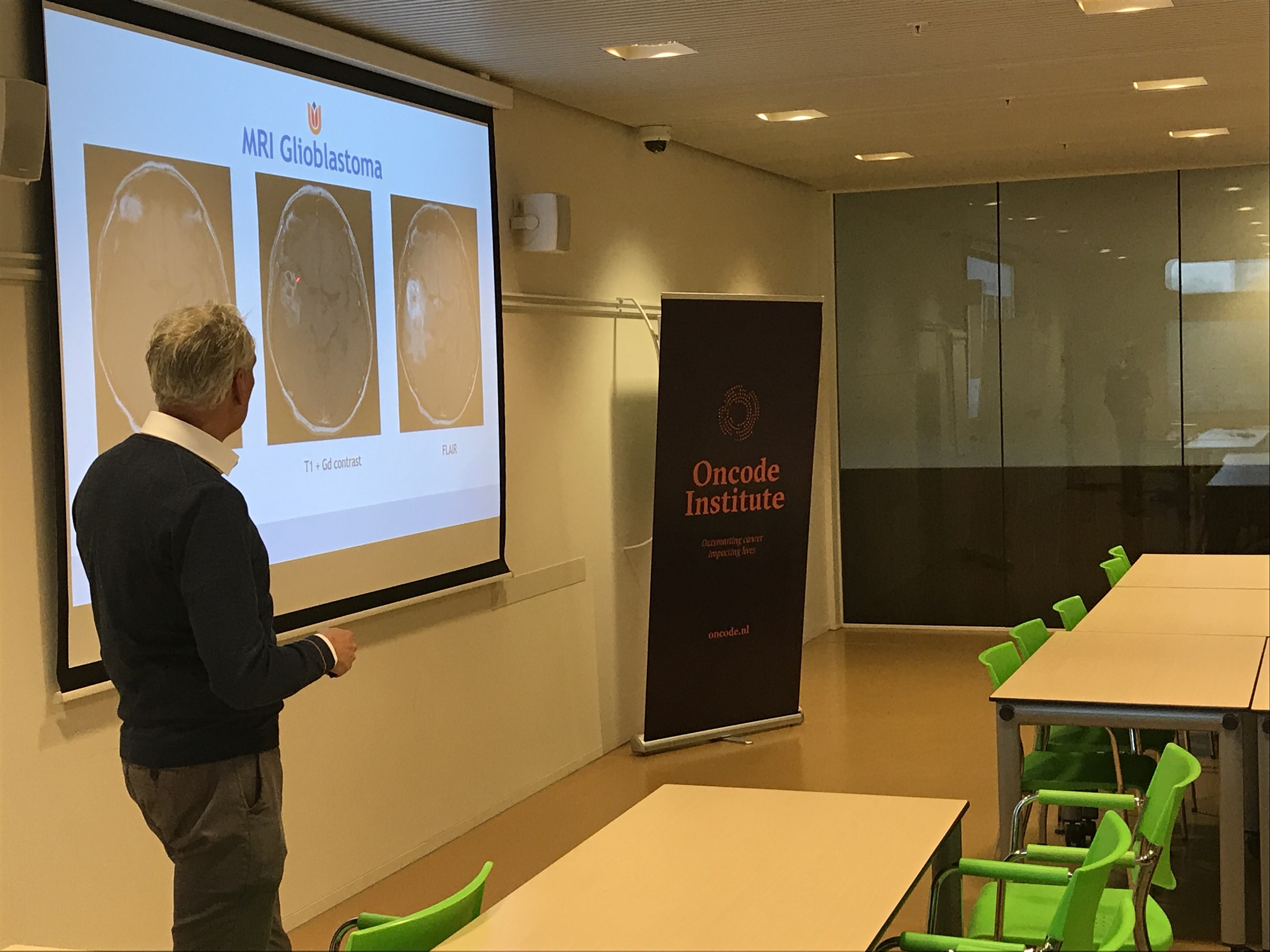On October 16th 2019, Oncode held the second in the series of clinical workshops with the aim to strengthen the link between fundamental and clinical research.
The goal of the Glioblastoma workshop was to present current trends in clinical research, explore how fundamental research can address unmet clinical needs and stimulate new collaborations (translational and clinical) that could be eligible for Oncode funding.
Glioblastoma is an aggressive disease with a very high unmet clinical need where almost all patients experience recurrence. In the last 40 years, there has been very little progress in the area of recurrent glioblastoma, and within the field of neuro-oncology, a number of failed clinical studies have been performed.
While the Hartwig foundation performs whole genome sequencing on tumor samples, so far only a few samples have a neuro-oncological diagnosis. Access to patient material in general is seen as a challenge for the glioblastoma researchers.

During the workshop, a few opportunities have been identified. One of them is to make sure that more glioblastoma patients are included in the Hartwig database and that better use is made of the currently available data. In addition, existing mouse models could be used to first test clinical ideas.
Oncode Investigator Leila Akkari (NKI), who was one of the speakers, said: “This workshop was organized as an informal and open discussion between scientists and clinicians about our scientific goals and shortcomings in glioblastoma research and treatment. With it, the opportunity was created to brainstorm and exchange ideas on alternative and innovative treatment strategies that could tackle the limited options we currently provide to glioblastoma patients with important insights from clinicians, particularly regarding the need to always seek better quality of life for patients. I strongly believe it paved the way for long lasting exchanges between fundamental and applied researchers that could lead to illuminating times ahead for clinical translation.”